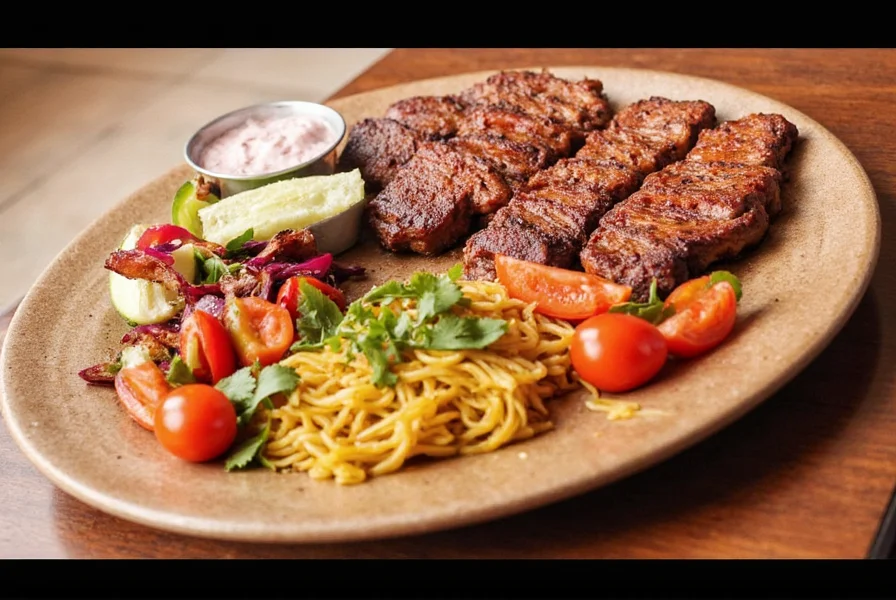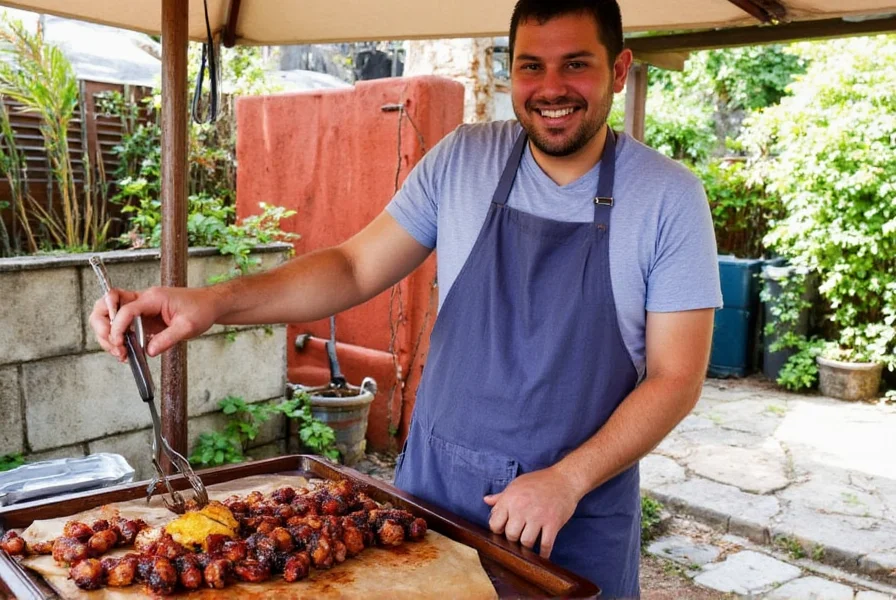Santa Maria-Style Barbecue: A Flavorful Journey Through Spice, Smoke, and Tradition
If you’ve ever craved smoky, peppery, flame-kissed meat with just the right amount of rustic charm, then Santa Maria-style barbecue might just become your new culinary obsession. This West Coast gem hails from California’s Central Coast and is as much a cultural celebration as it is a flavor explosion.
Table of Contents
- What Is Santa Maria-Style Barbecue?
- The Origins: From Rancheros to BBQ Kings
- Key Ingredients That Define the Flavor
- Santa Maria vs Other BBQ Styles – A Comparative Table
- Essential Equipment for Home Enthusiasts
- Top 5 Tips for Mastering Santa Maria-Style BBQ at Home
- Buying Guide: Must-Have Tools & Rubs
- Pairings & Sides: What Goes Well With This Style?
- Conclusion: Embrace the Smoke and Spice
What Is Santa Maria-Style Barbecue?
Santa Maria-style barbecue isn’t your average backyard grilling—it’s a time-honored tradition rooted in the rolling hills of California’s Central Coast. Originating in the 19th century among Mexican vaqueros (cowboys), this style of barbecue has evolved into a local pride point and even inspired annual festivals.
At its heart, Santa Maria-style barbecue centers around tri-tip roast, seasoned simply with salt, pepper, garlic powder, and red wine vinegar, then slow-grilled over red oak. The meat is cooked on a swinging rotisserie grill, allowing for even heat distribution and that iconic smoky finish.
The Origins: From Rancheros to BBQ Kings
The roots of Santa Maria-style barbecue stretch back to the open-range ranches of California during the 1800s. The original cooks were Mexican cowboys who learned how to cook large cuts of beef over open flames using minimal seasoning—mostly because they had limited ingredients and time while on the trail.
As the style became popular in the 20th century, particularly in Santa Maria Valley, it was adopted by local restaurants and eventually celebrated through community events like the Santa Maria Valley Strawberry Festival, where barbecue competitions have become a major attraction.
Key Ingredients That Define the Flavor
One of the most remarkable aspects of Santa Maria-style barbecue is its simplicity. Unlike other barbecue styles that use heavy sauces or marinades, Santa Maria relies on the interplay between quality ingredients and natural fire. Here's what makes the magic happen:
- Tri-Tip Roast: The star of the show, known for its marbling and bold flavor.
- Seasoning: A dry rub featuring coarse black pepper, sea salt, garlic powder, and sometimes a splash of red wine vinegar or olive oil to help the spices adhere.
- Red Oak Wood: Provides a distinctive smoky aroma and clean burn, ideal for long cooks.
Santa Maria vs Other BBQ Styles – A Comparative Table
| Feature | Santa Maria | Texas | Kansas City | Carolina |
|---|---|---|---|---|
| Main Meat | Tri-Tip | Brisket | Pulled Pork / Ribs | Pulled Pork |
| Primary Seasoning | Dry rub (salt, pepper, garlic) | Dry rub (salt, pepper, paprika) | Dry rub + Sweet tomato-based sauce | Vinegar-based or mustard-based sauce |
| Cooking Method | Swinging grill, red oak | Low n' slow, indirect smoke | Smoker, sweet wood | Slow smoked with hardwood |
| Flavor Profile | Smoky, peppery, earthy | Rich, fatty, bark-forward | Sweet, tangy, smoky | Light, acidic, smoky |
| Popular Side | Pinquito beans, grilled bread | Mac & cheese, coleslaw | Baked beans, cornbread | Coleslaw, hash |
Essential Equipment for Home Enthusiasts
You don’t need a ranch to enjoy Santa Maria-style barbecue at home. All you need is the right setup. Below are the essentials:
- Swinging Grill (Offset Griddle): Allows you to control the height of the meat above the fire for precise cooking.
- Charcoal Chimney Starter: For consistent ignition of lump charcoal or red oak chunks.
- Meat Thermometer: Ensures you hit perfect medium-rare (130–135°F) without guessing.
- Cast Iron Skillet: Great for roasting garlic or warming tortillas near the fire.
Top 5 Tips for Mastering Santa Maria-Style BBQ at Home
- Use High-Quality Tri-Tip: Look for well-marbled cuts and trim any excess fat before applying the rub.
- Rub It Right: Apply a generous but even layer of coarse ground black pepper, sea salt, and garlic powder.
- Preheat Your Grill: Let your red oak or lump charcoal burn down to hot embers before placing the meat.
- Grill Low and Slow: Cook over indirect heat, adjusting the meat height to manage doneness.
- Rest Before Slicing: Let the tri-tip rest for 10–15 minutes to retain juices and enhance tenderness.
Buying Guide: Must-Have Tools & Rubs
If you're looking to replicate authentic Santa Maria flavors at home, here are some top-rated products to consider:
| Product | Description | Features | Target Audience | Best For |
|---|---|---|---|---|
| Meat Thermometer – ThermoPro TP20 | Digital thermometer with dual probes and wireless connectivity. | Fast read, waterproof, app integration | Home cooks & pros alike | Perfectly cooked tri-tip |
| Tri-Tip Seasoning – Santa Maria Rub Mix | Pre-mixed blend of sea salt, black pepper, garlic, and herbs. | All-natural, no fillers | Beginners & convenience lovers | Quick, traditional flavor |
| Lump Charcoal – Royal Oak | Hardwood lump charcoal made from sustainable sources. | Natural burn, no chemicals | BBQ purists | Authentic Santa Maria flavor |
| Swinging Grill – Weber Smokey Mountain | Adjustable offset smoker/grill for optimal heat control. | Easy assembly, durable steel | Hobbyists & weekend chefs | Controlled cooking |
| Cast Iron Skillet – Lodge Pre-Seasoned | Classic cast iron skillet perfect for searing or warming sides. | Long-lasting, versatile | Anyone serious about grilling | Cooking garlic butter or tortillas |
Pairings & Sides: What Goes Well With This Style?
Santa Maria-style barbecue is best enjoyed family-style with hearty, rustic sides. Here are some classic pairings that elevate the experience:
- Pinquito Beans: Creamy heirloom beans native to the Central Coast, slow-cooked in bacon and onions.
- Grilled French Bread: Perfect for soaking up juices and balancing out rich meat flavors.
- Garlic Butter: Serve warm with bread or drizzle over sliced tri-tip for extra richness.
- Green Salad: Light, lemony vinaigrette cuts through the smokiness beautifully.
Conclusion: Embrace the Smoke and Spice
Santa Maria-style barbecue is more than just a method—it's a way to connect with history, heritage, and the elemental joy of cooking with fire. Whether you’re a seasoned pitmaster or a curious foodie, this style offers a unique blend of rustic simplicity and bold flavor that stands apart in the world of barbecue.
So gather your friends, fire up the grill, and let the smoky aroma of tri-tip remind you why we love to eat with our hands, share stories over meals, and celebrate every bite of life.












 浙公网安备
33010002000092号
浙公网安备
33010002000092号 浙B2-20120091-4
浙B2-20120091-4